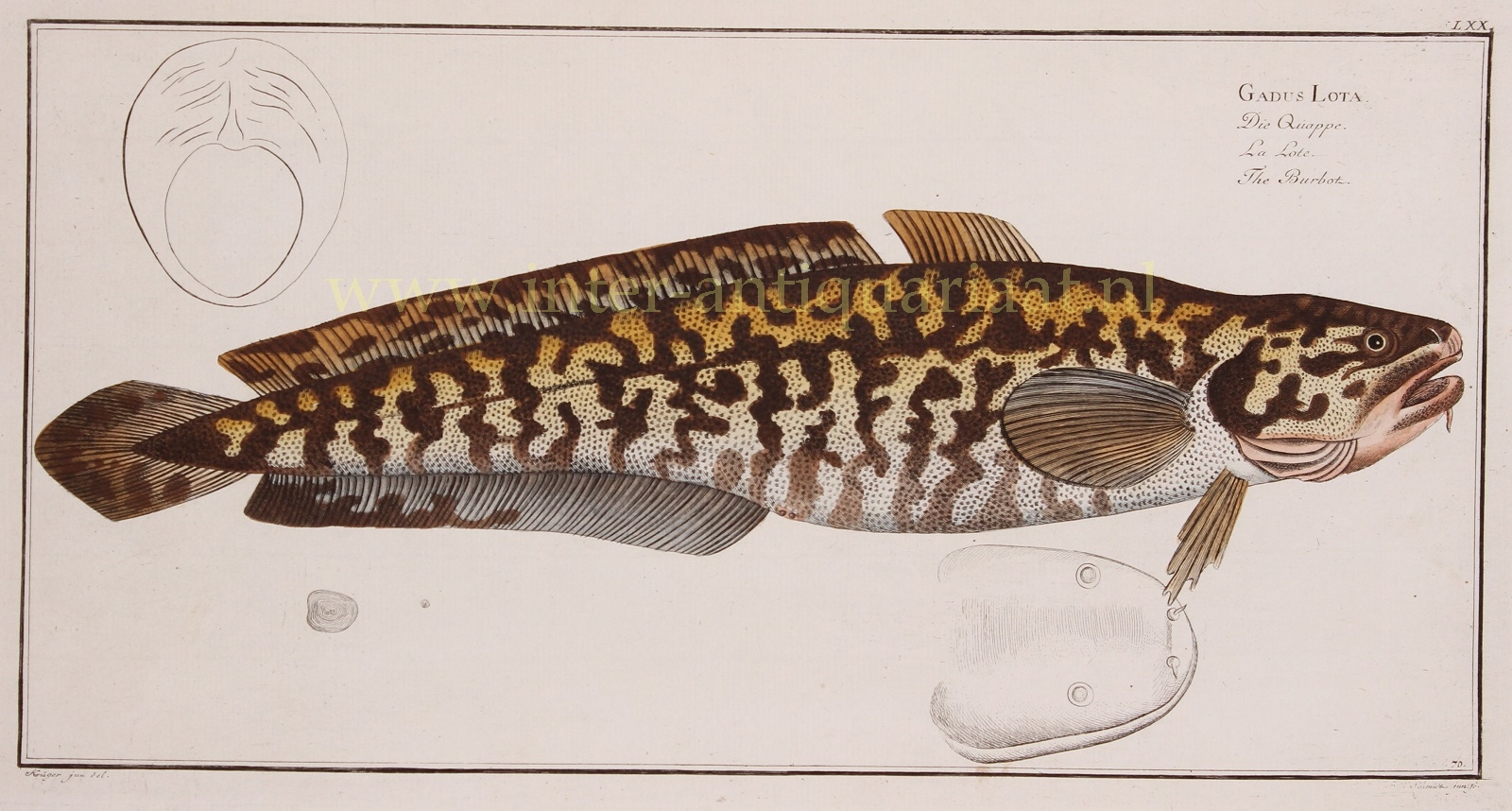THE BURBOT
“Gadus Lota/Die Quappe/La Lote/The Burbot.” (plate 70), copper engraving made by Ludwig Schmidt after the drawing of Krüger jr, for Markus Elieser Bloch‘s “Allgemeine Naturgeschichte der Fische” published in Berlin between 1782 and 1795. With original hand colouring. Size: 19 x 38 cm.
According to Bloch in his Allgemeine Naturgeschichte der Fische, a 12-volume, beautifully illustrated comprehensive work on fishes: the burbot “has a white, not bony, tasty meat which, since it is not fat, also gives good food to weak people. The liver is especially thought of as an excellent delicacy, and that Countess von Beuchlingen, in Thuringia, was so pleased with this dish that she used the greater part of her income for it.
The liver, hung in a jar and placed on the warm stove or in the sun, gives an oil which is an effective remedy to hold back the stains on the cornea. You can enjoy this fish either with a butter or wine broth or boiled from salt water, fried with vinegar or citric acid and finely chopped parsley, in butter and with a salad it makes a good dish. The liver is mixed with wine, butter, nutmeg flowers and lemon peel, with lemon juice added at the end. This dish is even more tasty if you let the liver boil very slowly and enjoy it with the following broth: take liver, butter and breadcrumbs, put them together in a mortar, bring them to the boil with wine and water and rub them through a hair towel.”
Bloch’s labour on the “Allgemeine Naturgeschichte der Fische” occupied a considerable portion of his life, and is considered to have laid the foundations of the science of ichthyology. The publication was encouraged by a large subscription, and it passed rapidly through five editions in German and in French. Bloch made little or no alteration in the systematic arrangement of Peter Artedi and Carl Linnaeus, although he was disposed to introduce into the classification some modifications depending on the structure of the gills. To the number of genera before established, he found it necessary to add nineteen new ones, and he described 276 species new to science, many of them inhabitants of the remotest parts of the ocean, and by the brilliancy of their colours, or the singularity of their forms, as much objects of popular admiration as of scientific curiosity.
Bloch is considered the most important ichthyologist of the 18th century.
Price: Euro 275,-


